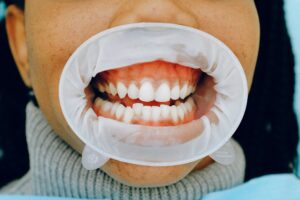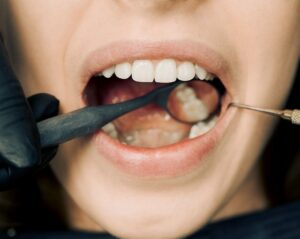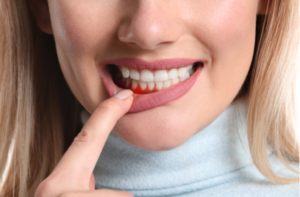 Noticing blood when brushing or flossing may seem like a small issue, but it can be an early sign of a bigger oral health concern. Bleeding gums are often a symptom of poor gum health and shouldn’t be overlooked. When you visit Dr. Egger’s practice, you’ll receive attentive care from a trusted provider in Mount Pleasant, Michigan. Choosing Dr. Egger means you’re putting your dental health in capable hands with a focus on comfort and prevention.
Noticing blood when brushing or flossing may seem like a small issue, but it can be an early sign of a bigger oral health concern. Bleeding gums are often a symptom of poor gum health and shouldn’t be overlooked. When you visit Dr. Egger’s practice, you’ll receive attentive care from a trusted provider in Mount Pleasant, Michigan. Choosing Dr. Egger means you’re putting your dental health in capable hands with a focus on comfort and prevention.
Why Your Gums Might Be Bleeding
Gums often bleed due to irritation caused by plaque—a sticky film that builds up on teeth. If plaque isn’t removed through proper brushing and flossing, it can inflame the gum tissue, leading to gingivitis. Left untreated, gingivitis may progress into a more serious condition known as periodontitis, which can damage the supporting structures of your teeth.
Other causes can include brushing too hard, using a firm-bristled toothbrush, or flossing incorrectly. Changes in hormones, certain medical conditions, and some medications may also increase your likelihood of experiencing bleeding gums.
Warning Signs You Shouldn’t Ignore
While occasional gum bleeding can happen, regular or persistent bleeding may be a sign of ongoing gum problems. Watch for additional symptoms like swelling, tenderness, gum recession, or chronic bad breath. These may all indicate the presence of gum disease.
Gum health plays a key role in your overall health as well. Studies show that untreated gum disease may be linked to other medical issues, including heart conditions and complications with blood sugar management. Addressing symptoms early can help reduce your risk.
Steps to Protect Your Gums
Good oral hygiene is the first defense against bleeding gums. Brush your teeth gently twice a day with a soft-bristled toothbrush, floss daily, and avoid skipping your regular dental checkups. These practices help control plaque and support gum health.
If your gums are already bleeding, professional care is the next step. A routine cleaning may be enough in early stages, while more advanced cases may require deep cleaning treatments to remove buildup below the gumline and support healing.
Don’t Wait—Call Dr. Egger Today
If your gums bleed regularly or you’ve noticed other signs of gum issues, now is the time to act. Reach out to Dr. Egger in Mount Pleasant, Michigan for a thorough exam and personalized treatment. Call 989-773-3560 to schedule your appointment and take control of your oral health with care you can trust.






 This time of year everyone has a New Year’s resolution. Lose weight. Exercise more. Call your brother/sister more often. Watch more SpongeBob. Work on your short game.
This time of year everyone has a New Year’s resolution. Lose weight. Exercise more. Call your brother/sister more often. Watch more SpongeBob. Work on your short game.

